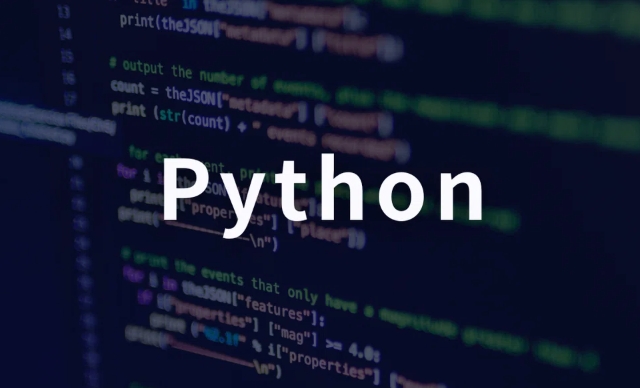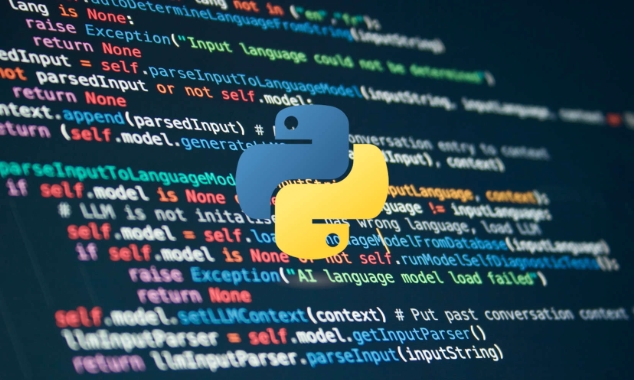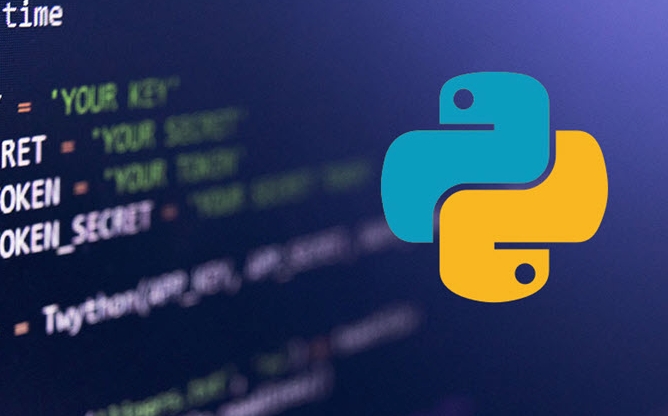Building Anomaly Detection Systems with Python
Clarify the exception definition; 2. Select appropriate methods such as Z-score, Isolation Forest; 3. Use Precision, F1 and other indicators to evaluate and tune; 4. Deploy the model and set up an alarm mechanism. The key to building an exception detection system is to understand data characteristics and business scenarios. First, analyze data distribution through EDA and communicate with business to determine the exception definition, then select statistical methods, model methods or deep learning methods based on data types and scenarios, use Python tools such as scikit-learn to achieve detection, combine evaluation indicators and manual review and optimization models, and finally deploy the system through frameworks such as FastAPI and set up alarm and model update mechanisms to ensure practicality.

Want to build an effective exception detection system in Python? In fact, the key is not how cool the tools are, but how your data looks and what abnormalities are manifested. Python has a wealth of libraries and tools, but how to use it well depends on how you design it in combination with the scene.

The following aspects are the most worthy of attention when building such systems.
1. Clear what an exception is
Many novices want to set up models at the beginning, but the first step should be to figure out: What situations are considered abnormal in the data you are facing? Is it a numerical mutation? Or distribution offset? Or some specific pattern?

For example, if you are monitoring server logs, the "abnormal" may be the surge in the number of accesses of a certain interface in a short period of time; and if you are analyzing user behavior, the "abnormal" may be the user logging in multiple consecutive times during an abnormal period.
suggestion:

- Do data exploration (EDA) first and see the data distribution
- Communicate with the business party to understand the actual definition of "exception"
- In some scenarios, the exception data is very scarce and an unsupervised method may be required.
2. Choose the right detection method
Python has many ready-made methods that can be used to detect exceptions. Different scenarios are suitable for different methods:
- Statistical-based methods : such as Z-score, IQR, suitable for numerical data, simple and effective
- Model-based methods : such as Isolation Forest and One-Class SVM, suitable for unsupervised scenarios
- Time series-based methods : such as Prophet and STL decomposition, suitable for time-dependent data
- Deep learning methods : such as Autoencoder, suitable for high-dimensional data or complex modes
For example, you can use scikit-learn 's IsolationForest to quickly run a model:
from sklearn.ensemble import IsolationForest model = IsolationForest(contamination=0.05) model.fit(data) data['anomaly'] = model.predict(data)
suggestion:
- Start with simple methods and see the effects
- Don't go into deep learning right away unless you really need it
- Try several more methods to compare the results
3. Evaluation and tuning cannot be careless
The anomaly detection model does not have a clear accuracy like the classification task, and it is more difficult to evaluate. You may use these metrics:
- Precision and Recall
- F1 score (especially when data is unbalanced)
- AUC-ROC curve (if you have partial labels)
If there are no exception samples marked in the data, you have to rely on business feedback to adjust the parameters. For example, after going online, it is really useful to observe whether the "abnormal" reported by the system is really useful.
suggestion:
- If there is labeled data, try to use supervised learning evaluation methods
- If not, manual sampling can be done
- Pay attention to the false positive rate of the model. Too high will affect actual use
4. Deployment and monitoring are also critical
The model is trained well, it does not mean it can be used. When deploying as a system, you must consider real-time, data input format, and abnormal alarm mechanism.
You can use Flask to set up a simple API interface to provide detection services, or you can use timed tasks to regularly process data.
suggestion:
- Deploy with lightweight frameworks, such as FastAPI or Flask
- Set up alarm mechanisms, such as email notification or access to monitoring system
- Update the model regularly because the data distribution may change
Basically that's it. It is not difficult to detect abnormalities in Python, but to create a practical system, you have to understand the data, choose the right method, and continuously optimize it.
The above is the detailed content of Building Anomaly Detection Systems with Python. For more information, please follow other related articles on the PHP Chinese website!

Hot AI Tools

Undress AI Tool
Undress images for free

Undresser.AI Undress
AI-powered app for creating realistic nude photos

AI Clothes Remover
Online AI tool for removing clothes from photos.

Clothoff.io
AI clothes remover

Video Face Swap
Swap faces in any video effortlessly with our completely free AI face swap tool!

Hot Article

Hot Tools

Notepad++7.3.1
Easy-to-use and free code editor

SublimeText3 Chinese version
Chinese version, very easy to use

Zend Studio 13.0.1
Powerful PHP integrated development environment

Dreamweaver CS6
Visual web development tools

SublimeText3 Mac version
God-level code editing software (SublimeText3)
 python shutil rmtree example
Aug 01, 2025 am 05:47 AM
python shutil rmtree example
Aug 01, 2025 am 05:47 AM
shutil.rmtree() is a function in Python that recursively deletes the entire directory tree. It can delete specified folders and all contents. 1. Basic usage: Use shutil.rmtree(path) to delete the directory, and you need to handle FileNotFoundError, PermissionError and other exceptions. 2. Practical application: You can clear folders containing subdirectories and files in one click, such as temporary data or cached directories. 3. Notes: The deletion operation is not restored; FileNotFoundError is thrown when the path does not exist; it may fail due to permissions or file occupation. 4. Optional parameters: Errors can be ignored by ignore_errors=True
 How to create a virtual environment in Python
Aug 05, 2025 pm 01:05 PM
How to create a virtual environment in Python
Aug 05, 2025 pm 01:05 PM
To create a Python virtual environment, you can use the venv module. The steps are: 1. Enter the project directory to execute the python-mvenvenv environment to create the environment; 2. Use sourceenv/bin/activate to Mac/Linux and env\Scripts\activate to Windows; 3. Use the pipinstall installation package, pipfreeze>requirements.txt to export dependencies; 4. Be careful to avoid submitting the virtual environment to Git, and confirm that it is in the correct environment during installation. Virtual environments can isolate project dependencies to prevent conflicts, especially suitable for multi-project development, and editors such as PyCharm or VSCode are also
 How to execute SQL queries in Python?
Aug 02, 2025 am 01:56 AM
How to execute SQL queries in Python?
Aug 02, 2025 am 01:56 AM
Install the corresponding database driver; 2. Use connect() to connect to the database; 3. Create a cursor object; 4. Use execute() or executemany() to execute SQL and use parameterized query to prevent injection; 5. Use fetchall(), etc. to obtain results; 6. Commit() is required after modification; 7. Finally, close the connection or use a context manager to automatically handle it; the complete process ensures that SQL operations are safe and efficient.
 How to share data between multiple processes in Python?
Aug 02, 2025 pm 01:15 PM
How to share data between multiple processes in Python?
Aug 02, 2025 pm 01:15 PM
Use multiprocessing.Queue to safely pass data between multiple processes, suitable for scenarios of multiple producers and consumers; 2. Use multiprocessing.Pipe to achieve bidirectional high-speed communication between two processes, but only for two-point connections; 3. Use Value and Array to store simple data types in shared memory, and need to be used with Lock to avoid competition conditions; 4. Use Manager to share complex data structures such as lists and dictionaries, which are highly flexible but have low performance, and are suitable for scenarios with complex shared states; appropriate methods should be selected based on data size, performance requirements and complexity. Queue and Manager are most suitable for beginners.
 python boto3 s3 upload example
Aug 02, 2025 pm 01:08 PM
python boto3 s3 upload example
Aug 02, 2025 pm 01:08 PM
Use boto3 to upload files to S3 to install boto3 first and configure AWS credentials; 2. Create a client through boto3.client('s3') and call the upload_file() method to upload local files; 3. You can specify s3_key as the target path, and use the local file name if it is not specified; 4. Exceptions such as FileNotFoundError, NoCredentialsError and ClientError should be handled; 5. ACL, ContentType, StorageClass and Metadata can be set through the ExtraArgs parameter; 6. For memory data, you can use BytesIO to create words
 How to implement a stack data structure using a list in Python?
Aug 03, 2025 am 06:45 AM
How to implement a stack data structure using a list in Python?
Aug 03, 2025 am 06:45 AM
PythonlistScani ImplementationAking append () Penouspop () Popopoperations.1.UseAppend () Two -Belief StotetopoftHestack.2.UseP OP () ToremoveAndreturnthetop element, EnsuringTocheckiftHestackisnotemptoavoidindexError.3.Pekattehatopelementwithstack [-1] on
 What is a weak reference in Python and when should you use it?
Aug 01, 2025 am 06:19 AM
What is a weak reference in Python and when should you use it?
Aug 01, 2025 am 06:19 AM
Weakreferencesexisttoallowreferencingobjectswithoutpreventingtheirgarbagecollection,helpingavoidmemoryleaksandcircularreferences.1.UseWeakKeyDictionaryorWeakValueDictionaryforcachesormappingstoletunusedobjectsbecollected.2.Useweakreferencesinchild-to
 python schedule library example
Aug 04, 2025 am 10:33 AM
python schedule library example
Aug 04, 2025 am 10:33 AM
Use the Pythonschedule library to easily implement timing tasks. First, install the library through pipinstallschedule, then import the schedule and time modules, define the functions that need to be executed regularly, then use schedule.every() to set the time interval and bind the task function. Finally, call schedule.run_pending() and time.sleep(1) in a while loop to continuously run the task; for example, if you execute a task every 10 seconds, you can write it as schedule.every(10).seconds.do(job), which supports scheduling by minutes, hours, days, weeks, etc., and you can also specify specific tasks.







